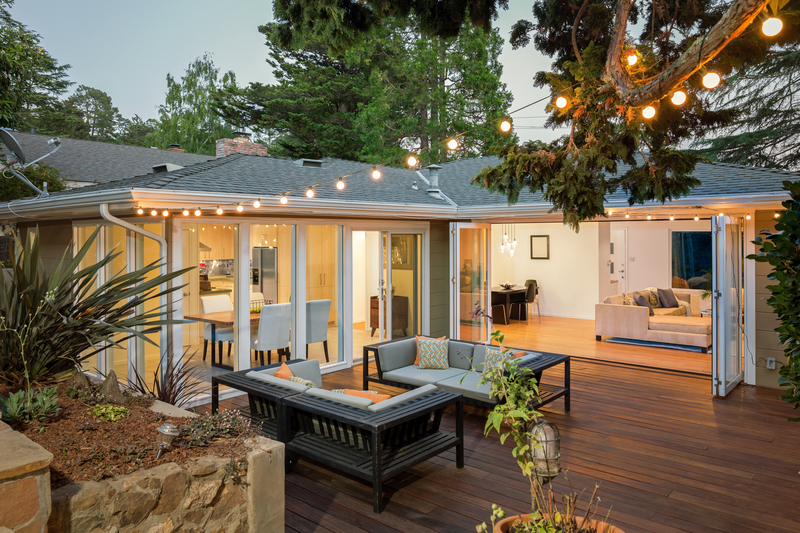Redefining Garden Spaces with Vertical Gardening
Posted on 30/06/2025
Redefining Garden Spaces with Vertical Gardening
Urban landscapes are evolving, and so are the ways we bring green spaces into our lives. Vertical gardening has emerged as a revolutionary solution, redefining limited outdoor and indoor spaces and infusing them with lush, living beauty. In this comprehensive guide, we dive deep into the world of vertical gardens and explore how stacking plants skyward is changing garden design forever. Whether you're a seasoned gardener or a complete novice, discover how you can transform your environment and lifestyle through vertical gardening techniques.

What Is Vertical Gardening?
Vertical gardening is a technique that involves growing plants upward--on walls, trellises, towers, or custom-built structures--rather than spreading them horizontally across the ground. This method is a game-changer for urban gardening, allowing even the smallest balconies, patios, and indoor nooks to flourish with greenery.
Key Features of Vertical Gardens
- Space Optimization: Makes use of vertical surfaces, making gardening possible where space is limited.
- Design Flexibility: Can be built indoors or outdoors, freestanding or wall-mounted, crafted from wood, metal, fabric, or recycled materials.
- Environmental Benefits: Improves air quality, provides insulation, and supports urban biodiversity.
- Visual Appeal: Adds dynamic, living artistry to homes, offices, schools, and public spaces.
The Benefits of Vertical Gardening
Why is vertical gardening more than just a trend? The advantages go well beyond aesthetics. Here's why more homeowners, businesses, and city planners are embracing this innovative approach.
Maximizing Limited Spaces
With increasing urbanization and shrinking yard sizes, making the most of every available inch is crucial. Vertical gardens turn bare walls and fences into productive plant zones. With a vertical garden, you can:
- Grow fresh herbs, leafy greens, or flowers in small urban apartments or compact outdoor spaces.
- Create privacy screens or living fences using climbing plants.
- Utilize balconies, patios, or rooftops more efficiently.
Improving Air Quality and Well-Being
Plants are natural air purifiers. Incorporating a vertical planting system in your home or workplace helps to remove toxins and increase oxygen levels. Additionally, green walls are known to:
- Reduce indoor temperatures by providing shade and natural insulation.
- Absorb sound, making environments quieter.
- Boost mood and reduce stress with biophilic design.
Sustainability and Urban Ecology
Modern vertical gardening systems promote eco-friendly lifestyles by making gardening accessible for all. They encourage local food production, cut food mileage, and create habitats for pollinators and beneficial insects. Living walls can also manage stormwater runoff and protect building exteriors from weather damage.
Exploring Variations in Vertical Gardening Systems
There is no one-size-fits-all solution in vertical gardening. The right setup depends on your space, budget, and plant preferences. Let's review the most popular variations of vertical gardens to inspire your own green transformation.
1. Wall-Mounted Planters
These systems use shelves, pockets, or modular panels that attach directly to walls. Choose from options made of felt, recycled plastic, ceramic, or wood. Wall gardens are ideal for:
- Kitchen herb gardens.
- Decorating indoor spaces with cascading foliage.
- Adding greenery to exterior facades or fences.
2. Trellis and Lattice Structures
This classic approach uses climbing plants such as ivy, jasmine, peas, and beans. Trellises can be wooden, metal, or even made from strong wire. They're perfect for:
- Separating zones within your garden.
- Encouraging privacy between neighboring properties.
- Showcasing colorful flower vines and edibles.
3. Living Green Walls
The ultimate in vertical garden design, living walls are often large-scale installations professionally installed with integrated irrigation systems. These structures make a dramatic statement in lobbies, office buildings, and upscale homes. Benefits include:
- Large-scale air and noise filtration.
- Major visual impact for luxury interiors and public spaces.
- Increased property value.
4. Tower and Pyramid Planters
Portable, self-standing, and often made of plastic or wood, tower planters allow gardeners to stack multiple plants vertically. Suitable for:
- Balconies and patios.
- Growing strawberries, lettuce, and herbs.
- Mobile gardening--move your garden with the seasons!
5. Hanging Gardens and Suspended Pots
Perfect for renters and those with minimal floor space. Hanging gardens can be created using pots, baskets, or even upcycled bottles. Try this with:
- Trailing plants like spider plants and pothos indoors.
- Compact tomatoes or strawberries outdoors.
- Artistically arranging levels for visual interest.
How to Start Your Own Vertical Garden
Ready to embrace vertical gardening in your home or workplace? Follow these practical steps to ensure a lush, thriving outcome!
Step 1: Choose Your Location
- Assess Light: Most edible plants and flowers need at least 4-6 hours of sunlight.
- Consider exposure to wind, rain, and temperature fluctuations (especially for outdoor installations).
- For indoor spaces, place your vertical garden near windows or supplement with grow lights.
Step 2: Decide on Structure and System
- Wall-Mounted, Freestanding, or Hanging?
- DIY or Professional Installation?
- Accessibility for watering and maintenance.
Step 3: Select Suitable Plants
- Herbs: Basil, mint, chives, thyme, oregano.
- Leafy greens: Spinach, lettuce, arugula.
- Flowers: Petunias, nasturtiums, ferns, begonias.
- Edible climbers: Peas, beans, cherry tomatoes, cucumbers.
- Succulents or ferns for low-maintenance options.
Step 4: Prepare Your Growing Medium
- Soil: Use high-quality potting mix suited to your plants.
- Hydroponic options available for soil-free vertical systems.
- Ensure adequate drainage to prevent root rot.
Step 5: Integrate Irrigation
Consistent watering is key for success. Options include:
- Hand-watering with a drip bottle or watering can.
- Drip irrigation systems for large or automated walls.
- Self-watering planters (wicking setups) for compact installations.
Step 6: Maintain and Enjoy
- Fertilize plants periodically.
- Watch for pest or disease issues common in densely planted areas.
- Prune and replace as needed for continuous beauty and productivity.
Design and Aesthetics: Creating Stunning Vertical Gardens
One of the most compelling aspects of vertical gardening is the potential for breathtaking design. A living wall can transform a bland fence or empty corridor into a piece of living art. Consider these tips for maximizing visual impact:
- Combine textures: Mix ferns, grasses, flowering annuals, and succulents for visual variety.
- Play with color: Alternate light and dark foliage, or pepper with colorful blooms.
- Vary plant sizes and shapes for a dynamic, three-dimensional effect.
- Frame your garden with wood, metal, or ceramic for a polished look.
Common Challenges and How to Overcome Them
As with any type of gardening, success with vertical gardening comes with its own set of unique challenges. Here's how to tackle some of the most common problems:
1. Watering Woes
- Vertical systems dry out more quickly. Automate watering where possible or use moisture-retaining soil mixes.
- Ensure even distribution of water so that upper plants don't deprive lower ones.
2. Structural Considerations
- Support heavy installations with proper brackets and fasteners.
- Use waterproof barriers when mounting on indoor or external building walls.
3. Sunlight Management
- Rotate plants if possible, or use grow lights for shaded interiors.
- Choose shade-tolerant species for north-facing walls.
4. Maintenance
- Schedule regular inspections for pests, disease, and nutrient deficiency.
- Plan for seasonal replanting, especially in temperate climates.

Trending Ideas: Going Beyond Traditional Vertical Gardens
The world of vertical gardening is rapidly expanding. Check out these inventive applications you might want to try:
- Edible living walls in restaurants, reducing food miles for chefs.
- School gardens for hands-on science lessons and healthy eating education.
- Green screens on balconies or terraces that double as privacy barriers and noise reducers.
- Modular plant tiles for easy seasonal swap-outs or event-based decoration (parties, weddings, etc.).
- Upcycled bottle gardens and pallet planters for sustainable creativity.
The Future of Garden Spaces: Why Vertical Gardening Is Here to Stay
As cities grow, and green spaces become increasingly valuable, vertical gardening offers a practical and beautiful solution. It enhances our homes, improves air quality, brings food production closer to our kitchens, and reconnects us with nature--no matter the scale. Architects and urban planners are now incorporating large-scale green walls into new buildings, while homeowners and apartment dwellers can enjoy the benefits on a more personal level.
Final Thoughts:
Redefining garden spaces with vertical gardening is more than a passing fad--it's a movement toward sustainable, space-savvy, and healthier living. Modern vertical gardens can fit any lifestyle or aesthetic, from DIY pallet constructions to lavish indoor green walls. Embrace the possibilities, unleash your creativity, and let your garden grow--up!
Ready to transform your space? Start exploring the endless possibilities of vertical gardening today, and leap into a greener, healthier, and more beautiful future.

